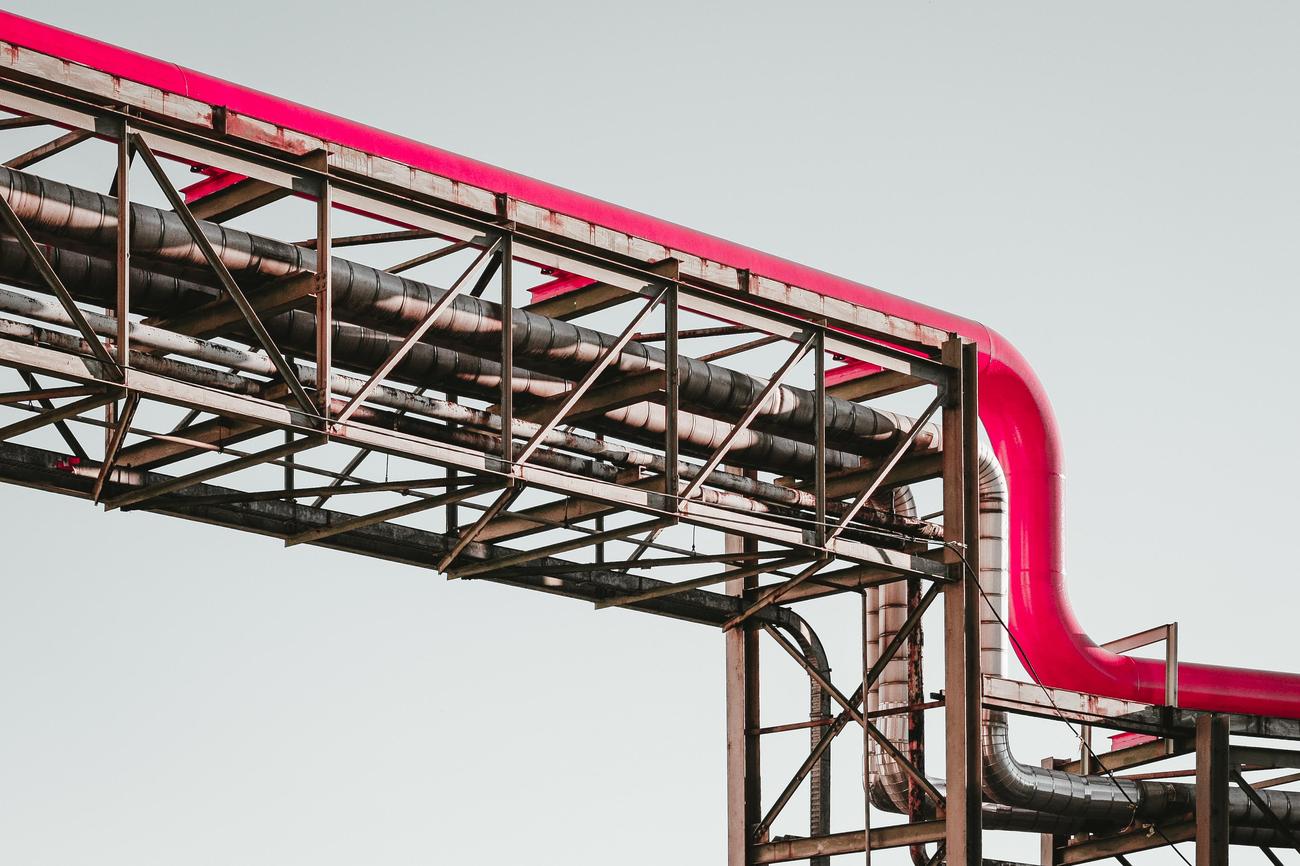Are you looking to ensure optimal performance and longevity for your HVAC system? Look no further than our comprehensive HVAC maintenance checklist. In this article, titled “HVAC Maintenance Checklist: Essential Tips for Efficient Systems,” we will guide you through a series of crucial steps to keep your heating, ventilation, and air conditioning system running smoothly all year round. Whether you’re a homeowner or a facility manager, our expert tips and insights will help you prevent costly breakdowns, improve energy efficiency, and extend the lifespan of your HVAC equipment. So, let’s dive into the world of HVAC maintenance and ensure your system operates at its best.

HVAC Maintenance Checklist
When it comes to keeping your HVAC system running smoothly and efficiently, regular maintenance is key. With the proper HVAC maintenance checklist, you can ensure that your system operates at peak performance, extends its lifespan, and even saves you money on energy bills. In this article, we will explore some essential tips for maintaining efficient HVAC systems.
Cleaning: One of the first items on your HVAC maintenance checklist should be cleaning. Over time, dust and debris can accumulate on the condenser and evaporator coils, reducing system efficiency. Regularly cleaning these coils can improve airflow and prevent blockages. Additionally, cleaning or replacing filters is crucial to maintain good air quality and prevent clogs. Remember, a clean HVAC system is a happy and efficient one.
“Regularly clean condenser and evaporator coils to improve system efficiency. Don’t forget to clean or replace filters to maintain good air quality.”
Drainage: Checking the drain pans for standing water is another important step in HVAC maintenance. Blocked or clogged drain pans can lead to overflowing water, causing damage to your system. By cleaning the drain pans and ensuring proper flow through drain lines, you can prevent water damage and ensure your HVAC system operates smoothly.
“Regularly check and clear drain pans to avoid overflows. Pay attention to drain lines and clear any clogs to maintain proper flow.”
Belts and Pulleys: Worn-out belts and pulleys can cause system malfunctions and increase energy consumption. Including an inspection of belts and pulleys in your HVAC maintenance checklist can help prevent these issues. By replacing any worn-out belts and pulleys, you can keep your system running efficiently and reduce the risk of breakdowns.
“Don’t forget to inspect and replace worn-out belts and pulleys to prevent system malfunctions and reduce energy consumption.”
Duct Inspection: Your HVAC system’s ductwork plays a vital role in maintaining indoor air quality. Inspecting the ducts for dust, mold, and debris is essential to prevent these contaminants from circulating throughout your home. Cleaning or repairing the ducts as needed ensures that your HVAC system continues to provide clean and healthy air.
“Regularly inspect and clean ducts to maintain indoor air quality and prevent the circulation of dust, mold, and debris.”
Humidity Levels: Monitoring humidity levels in and around your HVAC system is crucial. High humidity can lead to mold growth, while low humidity can cause discomfort and damage certain materials. By observing and adjusting humidity levels as necessary, you can create a comfortable and healthy indoor environment.
“Pay attention to humidity levels to prevent mold growth and maintain a comfortable indoor environment.”
Refrigerant Charge and Leaks: Checking the refrigerant charge is another important step in your HVAC maintenance checklist. Proper refrigerant levels are crucial for optimal system performance. Additionally, inspecting for refrigerant leaks is essential, as leaks can lead to performance issues and environmental damage. If you suspect a refrigerant leak, it’s best to consult a professional technician for repairs.
“Regularly check refrigerant charge to ensure optimal system performance. Inspect for leaks to prevent performance issues and environmental damage.”
Frequency: The frequency of HVAC maintenance tasks depends on various factors such as the type of system and the environment it operates in. To determine the specific maintenance intervals for your system, consult the manufacturer’s guidelines or seek professional advice. Adhering to a regular maintenance schedule can help identify and address potential issues before they escalate into costly repairs or system failures.
“Refer to manufacturer guidelines or seek professional advice to determine the appropriate frequency for HVAC maintenance tasks.”
Tools: Different HVAC maintenance tasks may require specific tools. To ensure you are prepared, make sure you have the necessary tools beforehand. Coil cleaners, vacuum cleaners, wrenches, and pressure gauges are just a few examples of tools that may be required for various maintenance procedures. Keeping your toolbox stocked and ready can save you time and effort during maintenance.
“Ensure you have the necessary tools, such as coil cleaners, vacuum cleaners, wrenches, and pressure gauges, for HVAC maintenance tasks.”
Documentation: Keeping comprehensive records of the maintenance tasks you perform is highly beneficial. Document the dates, findings, and any necessary repairs or adjustments made during the maintenance process. This documentation serves as a valuable reference for future maintenance and can help identify patterns or recurring issues.
“Maintain records of maintenance tasks performed, including dates, findings, and any necessary repairs or adjustments made.”
By following this comprehensive HVAC preventive maintenance checklist, you can ensure your HVAC system operates efficiently, reduces energy consumption, improves indoor air quality, and extends the equipment’s lifespan. Regular maintenance also allows you to identify and address potential issues before they escalate into costly repairs or system failures.
Now that you have a clear HVAC maintenance checklist at your disposal, you can take proactive steps to keep your system running smoothly. Remember, a well-maintained HVAC system keeps you comfortable while saving you money. So, grab your tools, get started, and enjoy the benefits of an efficient HVAC system!
HVAC maintenance plays a crucial role in maintaining the comfort of your home or office environment. Without proper maintenance, your HVAC system can suffer from various issues, leading to decreased efficiency and increased energy consumption. To ensure your HVAC system is running at its best, it’s essential to know the facts about HVAC maintenance. Click here to explore some interesting facts about HVAC maintenance: facts about HVAC maintenance. You’ll be amazed by the insights you’ll gain and the benefits you’ll reap by properly maintaining your HVAC system. So, don’t miss out on this valuable information – click the link and discover the secrets of HVAC maintenance today.
Key Maintenance Checks for Your HVAC System
[youtube v=”rjPhfaGznSA”]
Regular maintenance is essential to keep your HVAC system running smoothly and efficiently. By performing yearly maintenance checks, you can ensure that your system is in good condition, prevent potential issues, and prolong its lifespan. In this article, we will discuss some important HVAC maintenance tasks that you should include in your routine.
Cleaning the Coils and Filters
One crucial maintenance task is to regularly clean the condenser and evaporator coils. Over time, these coils can accumulate dirt, dust, and debris, which can hinder the system’s efficiency. By keeping the coils clean, you can ensure proper heat transfer and improve overall performance. Additionally, cleaning or replacing the filters is important to maintain good air quality and ensure that airflow is not restricted.
“Regularly clean condenser and evaporator coils to improve system efficiency. Clean or replace filters to maintain good air quality.”
Clearing Drain Pans and Inspecting Belts and Pulleys
To prevent overflow and water damage, it’s essential to check and clear the drain pans. Over time, these pans can accumulate dirt and debris, leading to clogs and potential leaks. Additionally, inspecting and replacing worn-out belts and pulleys can help prevent system malfunctions and reduce energy consumption.
“Check and clear drain pans to avoid overflows. Inspect and replace worn-out belts and pulleys to prevent system malfunctions and reduce energy consumption.”
Inspecting and Cleaning Ducts
Regularly inspecting and cleaning ducts is essential to maintain indoor air quality and prevent the circulation of dust, mold, and debris. Over time, ducts can accumulate dirt and allergens, which can negatively impact the air you breathe. By keeping the ducts clean, you can ensure a healthy and comfortable indoor environment.
“Regularly inspect and clean ducts to maintain indoor air quality and prevent the circulation of dust, mold, and debris.”
Monitoring Humidity Levels and Checking Refrigerant Charge
Maintaining appropriate humidity levels is crucial to prevent mold growth and create a comfortable indoor environment. Additionally, regularly checking the refrigerant charge ensures optimal system performance. Low refrigerant levels can indicate a possible leak, which should be addressed promptly to prevent performance issues and environmental damage.
“Pay attention to humidity levels to prevent mold growth and maintain a comfortable indoor environment. Regularly check refrigerant charge to ensure optimal system performance.”
Seeking Professional Guidance and Maintaining Records
It is important to refer to manufacturer guidelines or seek professional advice to determine the appropriate frequency for HVAC maintenance tasks. Different systems may have specific requirements, and it’s crucial to follow the recommendations provided. Additionally, ensuring you have the necessary tools and equipment for maintenance tasks is essential.
“Refer to manufacturer guidelines or seek professional advice to determine the appropriate frequency for HVAC maintenance tasks. Ensure you have the necessary tools for HVAC maintenance.”
To keep track of your HVAC system’s maintenance history and stay organized, it’s recommended to maintain records of the tasks performed. This can include the dates, findings, and any necessary repairs or adjustments made. By keeping detailed records, you can ensure that your system receives proper care and swiftly address any recurring issues.
“Maintain records of maintenance tasks performed, including dates, findings, and any necessary repairs or adjustments made.”
In conclusion, following this HVAC maintenance checklist can significantly contribute to the efficient operation of your system, reduce energy consumption, improve indoor air quality, and extend the lifespan of your equipment. By performing regular maintenance checks and addressing any issues promptly, you can ensure a comfortable and healthy environment in your home or office.
“Following this HVAC maintenance checklist can ensure your system operates efficiently, reduces energy consumption, improves indoor air quality, and extends the equipment’s lifespan.”

FAQ
Q: Why is cleaning the condenser and evaporator coils important in HVAC maintenance?
A: Cleaning the condenser and evaporator coils regularly is important in HVAC maintenance because it improves system efficiency. Dirty coils can hinder heat transfer, causing the system to work harder and consume more energy. Clean coils also help maintain good air quality by preventing the buildup of dust, debris, and mold.
Q: How often should HVAC filters be cleaned or replaced?
A: HVAC filters should be cleaned or replaced regularly to ensure optimal performance and air quality. The frequency may vary depending on factors such as the type of filter and the environment it operates in. It is recommended to check filters monthly and clean or replace them every 1 to 3 months, or as indicated by the manufacturer.
Q: Why is it necessary to check and clear drain pans and lines in HVAC systems?
A: Checking and clearing drain pans and lines in HVAC systems is necessary to prevent water overflows and potential damage. Standing water in drain pans can lead to leaks and mold growth, while clogs in drain lines can cause water backup and system malfunctions. Regular maintenance of drainage components helps ensure proper water flow and prevent costly issues.
Q: How can inspecting ducts contribute to HVAC maintenance?
A: Inspecting ducts is an important part of HVAC maintenance as it helps identify dust, mold, and debris buildup that can affect indoor air quality. Dirty or damaged ducts can impede airflow, reduce system efficiency, and distribute pollutants throughout the space. Cleaning or repairing ducts as necessary can help maintain a cleaner and healthier indoor environment.
Q: Why is it important to monitor and maintain optimal humidity levels in HVAC systems?
A: Monitoring and maintaining optimal humidity levels in HVAC systems is important for various reasons. High humidity can promote mold growth, cause musty odors, and make the indoor environment uncomfortable. On the other hand, low humidity can lead to dry skin, respiratory discomfort, and damage to certain materials. Monitoring and regulating humidity levels contribute to a more comfortable and healthy living or working environment.
“`json
“`
- China II Review: Delicious Food & Speedy Service - April 17, 2025
- Understand Virginia’s Flag: History & Debate - April 17, 2025
- Explore Long Island’s Map: Unique Regions & Insights - April 17, 2025
















